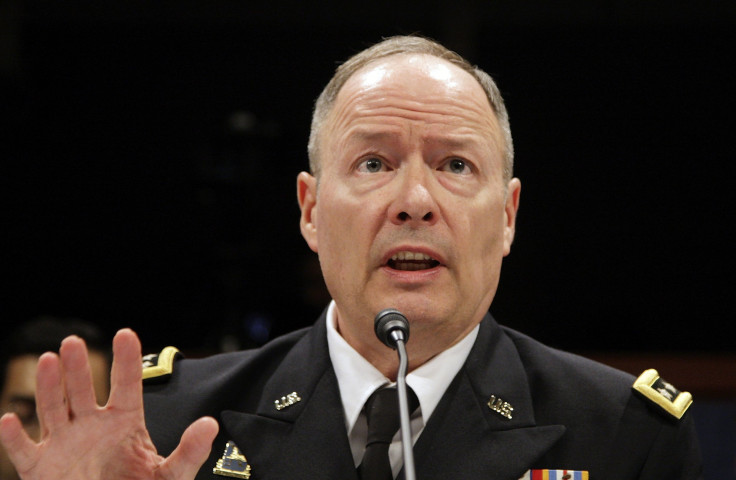Warrantless Surveillance? The NSA Did It Before, At Least Three Times

The National Security Agency’s widespread surveillance of communications by Americans may have caused a scandal when it was revealed last month, but it was hardly the first time the sprawling, super-secret entity was caught snooping on U.S. citizens. In fact, the NSA was caught spying on Americans, for decades, long before the 2001 attacks on the U.S. persuaded authorities to create mass eavesdropping programs in an attempt to catch terrorists.
The agency was engaged until 1975 in three covert programs that involved spying on U.S. citizens, as well as on foreign nationals. Outrage in the 1970s over the programs led to a Senate inquiry which produced the current system of checks, which were supposed to prevent such abuses of the agency’s immense power to eavesdrop from recurring.
Secrecy News, a newsletter by the Federation of American Scientists, posted on Monday a paper published in an Army intelligence journal, which said that "after World War II, the National Security Agency established and directed three programs that deliberately targeted American citizens' private communications." The paper is the work of Maj. Dave Owen, an officer with the 709th Military Intelligence Battalion at Menwith Hill, an NSA base in England often described as the world’s largest communication interception facility.
According to the paper, "A Review of Intelligence Oversight Failure: NSA Programs that Affected Americans," which was published in the October-December 2012 issue of Military Intelligence Professional Bulletin, the programs were code-named Project Shamrock (1945 to 1975) and Project Minaret (1960 to 1973), plus another known as Drug Watch Lists (1970 to 1973). Shamrock collected telegraph communications, Minaret looked at terms and names of interest for intelligence, and the drug lists were meant to help fight illegal narcotics by keeping tabs on those believed to be trafficking them.
Much like the current NSA surveillance programs, those projects survived through Republican and Democratic administrations, except the short-lived Drug Watch List program, which took place entirely under Republican Richard Nixon.
The NSA began spying on Americans from the very beginning, when it was created in 1952 to centralize all the activities known as signal intelligence (the interception of communications, as opposed to human intelligence, which involves recruiting people to spy.) The directive from President Harry Truman that created the agency neglected to specify the limitations within which the new entity would operate, thereby creating a legal vacuum where the NSA could, the paper states, essentially do what it wanted.
As a matter of fact, National Security Council Intelligence Directive 9 said the NSA would deal with foreign communications intelligence. But foreign intelligence can be gleaned from the communications of Americans as well, and so the agency could listen in to domestic sources, in a legal environment even murkier than today’s, when surveillance warrants are overseen by the Foreign Intelligence Surveillance Court -- whose rulings are secret.
Then as now, some of the private companies cooperating with the project were hesitant. Some telegraph network operators involved in Project Shamrock had doubts about the legality of the intercepts, by a system that could collect as many as 15,000 telegrams per month. The NSA did not share those doubts. Its general counsel, Roy Banner, said as late as 1976 that “no existing statutes control, limit, or define the signals intelligence activities of the NSA.”
The telegraph collection program was killed in 1975 by the director of the NSA, amid increasing congressional concerns that this collection was in violation of the Fourth Amendment, which bars unreasonable searches and seizures unless authorized by a warrant. The same thing had happened two years earlier to Minaret, a watch list born in 1960 that developed on Shamrock to search for terms, names, and references that could aid in intelligence.
But in 1967, at the request of the White House, FBI and attorney general, the search broadened to include American opponents of the Vietnam War and Black Power organizations. By the time it was ended, the program was following information on 1,200 American citizens. Targeted individuals included “members of radical political groups” but also “celebrities (…) to ordinary citizens involved in protests against their government,” the Army paper says.
As for the drug watch list, it was probably far more serious, in terms of implications for civil liberties, than today’s sweeping data-mining operations. Secrecy News notes that “to date, this program represents the only occasion where NSA established new collection accesses for the purpose of targeting American citizens.”
This level of overreach by the NSA resulted in a congressional backlash that produced the U.S. Senate Select Committee to Study Governmental Operations with respect to Intelligence Activities headed by Sen. Frank Church, D-Idaho, better known as the Church Committee. The panel concluded that the lack of an NSA charter or oversight were incompatible with the Fourth Amendment rights of Americans, and as a consequence, Congress passed the Foreign Intelligence Surveillance Act of 1978.
Among other things, the law instituted the United States Foreign Intelligence Surveillance Court or FISC, which is involved to this day in the oversight of the NSA by issuing (in secret) warrants for eavesdropping. In its 33 years of operation, the court has denied, according to an investigation by the Wall Street Journal, just 0.03 percent of the warrants it has been asked to issue.
© Copyright IBTimes 2024. All rights reserved.






















